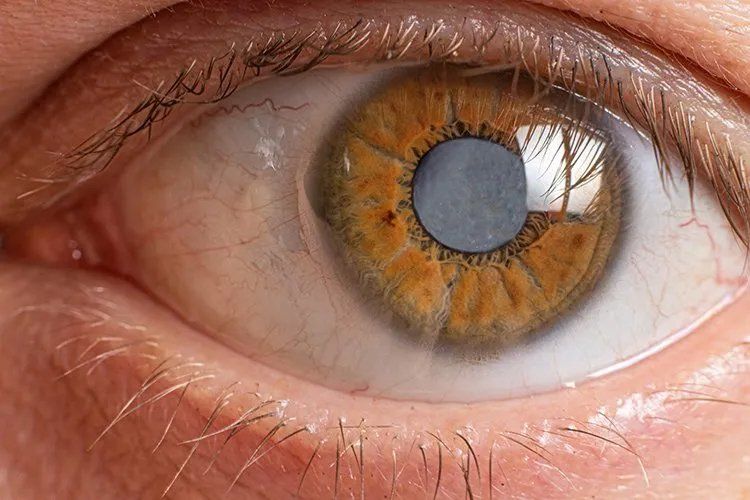Cataract Surgery
Serving Sewickley, Economy, Moon, Carnot, PA & Surrounding Areas
Ophthalmology Associates of Osborne offers corrective surgery to remove cataracts from your eyes, clearing up your vision and improving your day-to-day living. If you need to see if you have cataracts or need to have cataract surgery, call us today at (412) 741-6776 to schedule a consultation.
Modern cataract surgery is one of the most common and safest procedures performed today. Both the technology and methodology continue to improve. Most cataracts happen because of normal changes in the eye and develop gradually as you get older. Around age 40, the proteins in the lens of your eye start to break down and clump together. This clump makes a cloudy area on your lens.
Other reasons that contribute to cataract development include:
- certain medical problems, including diabetes
- history of smoking
- history of eye trauma, eye surgery, or radiation treatments on your upper body
- excessive sun exposure, especially without sunglasses that protect your eyes from damaging ultraviolet (UV) rays
- using certain medications such as corticosteroids
There are many types of cataracts, but they are all removed with surgery. Doctors cannot definitively predict how quickly a person’s cataract will develop. Being ready for surgery is a decision between the patient and doctor. Most patient opt to have surgery when they are symptomatic and their vision loss from the cataracts begin affecting daily activities, or, if vision reduction is threatening legal driving privilege.
When do I know it is time for Cataract Surgery?
You may be ready for cataract surgery when your vision makes it difficult to read comfortably, drive, work or do other activities. The best way to know is to have a complete eye exam and discuss concerns with one of our doctors.
Your decision to have cataract surgery depends on several factors, including:
- Your personal goals and preferences
- If you drive and no longer meet state visual criteria
- The results of your medical eye evaluation
- Your general health and any other eye conditions
- Your insurance company’s policies on cataract surgery
Almost everyone who has cataract surgery notices improved vision. However, you might not have good vision if you have another eye condition, such as glaucoma or macular degeneration, since cataract surgery does not address these separate areas of the eye. We will discuss any risks and the benefits of surgery during your exam.
About the procedure
Cataract surgery is a surprisingly short procedure. It is done at an eye surgery center, so there is no overnight hospital stay. The surgery lasts about 10-15 minutes, and you leave the center about an hour after surgery is over.
You have local anesthesia for cataract surgery. This is in the form of numbing drops placed in your eyes, so you do not feel anything. We also give you a light sedative, which is medication to help you feel relaxed and sleepy. You do not have to be put completely to sleep. An anesthesiologist or certified nurse anesthetist will be with you during cataract surgery. They will help make sure you are comfortable and safe.
Cataract surgery can be performed bladeless with a laser, called LenSx, or manually with a blade. Either option creates an opening that allows the surgeon to break up and remove the old lens material. Then, a new intraocular lens (IOL) is inserted to restore vision.
You will need to wear a protective shield (which the surgery center provides) over your eye when you are sleeping for one week after the surgery. You will be able to go home after the surgery, but will need to return to the office at OAO for your first follow-up visit within 24 hours for one of our doctors to check your eyes for signs of infection and to measure your eye pressure. Vision may seem a little fuzzy at this 1-day post-op appointment and that is OKAY. One of our doctors will ensure that things look great!
MEET OUR SURGEONS

Michael Alunni, MD
Dr. Michael Alunni is an extremely skilled and saught-after cataract surgeon who has been with OAO for over 2 years. He has well over two decades of specialty experience in cataract surgery and glaucoma management including microinvasive glaucoma surgeries (MIGS).
Dr. Alunni received his bachelor of science degree from the Pennsylvania State University then went on to graduate from Jefferson Medical College of Thomas Jefferson University Medical School in 2005 with honors. After finishing his residency at UPMC Eye Center, he completed his fellowship at Allegheny Ophthalmic and Orbital Associates. He currently does surgeries at The Surgery Center at Cranberry, St. Clair Health Dunlap Family Outpatient Center, and Gamma Surgery Center in O'Hara Township.

Michaela Hickey, DO
Dr. Michaela Hickey is talented surgeon who has been performing advanced technology cataract surgeries for over a decade.
She is returning to Pittsburgh from Penn Highlands DuBois Hospital where she performed cataract surgeries, eyelid surgeries, and comprehensive ophthalmology examinations, laser treatments, and procedures.
After graduating from Lake Erie College of Osteopathic Medicine at Seton Hill, she went on to complete her residency at the Oakwood Hospital System in Taylor Michigan.
Dr. Michaela Hickey, one of our cataract surgeons, explains what to expect with Cataract Surgery in this short, 6 minute video:
To prepare you for the surgery, our team and doctors will walk you through the process. The surgery is outpatient that allows you to go home afterwards with a driver. Plan to spend approx. 2-3 hours at the surgery center, even though the surgery takes roughly 10 minutes. The doctor will dilate your pupils with eye drops and, in most cases, use twilight sedation. During the surgery, our doctor will remove the cloudy lens either manually or with a laser. An artificial lens will then be placed that will re-focus light to the back of your eye. It may take a few days for your vision to adjust to the new lens, so we will need to schedule a couple follow-up appointments to ensure that your eye is healing properly. If you have mild itching or discomfort, avoid scratching or rubbing your eyes; this is normal. You can use artificial tears to lubricate the eye along with your prescribed post-op drops.

Traditional vs Laser Cataract Surgery - which is better?
Both types of surgery involve making a very small incision on the side of the cornea in order to remove the cataract-clouded lens. After the cataract is removed, an intraocular lens will be inserted in order to replace the clouded, natural lens. The incision heals itself without the need for any sutures, but eye drops are used after surgery to prevent infection and assist with healing.
The main difference between traditional and laser cataract surgery is in the technology and methodology used.
Traditional cataract surgery uses handheld instruments like a blade and forceps to cut the incisions and remove the lens. A surgeon manually creates a cut in the corneal tissue with a blade. He/she also creates the capsulorhexis, a surgical technique used to remove the central anterior part of the capsule of the lens during cataract surgery, manually with shear and tensile forces.
Laser cataract surgery will provide the same outcome as traditional cataract surgery but all incisions are done without a blade. It reduces the number of instruments used and can also increase the precision of the procedure. Corneal incisions and capsulorhexis are done with the laser instead of manually with instruments and blades. Also, some of the traditionally challenging steps of cataract surgery are now computer-controlled and automated, adding to the overall safety of the procedure. The laser can create more consistent and precise capsulotomies and incisions from which the lens is removed.
Click on the button below to watch a very short video illustrating the advantages to laser-assisted cataract surgery:
Cataract Lens Replacement (IOL) Options
At the time of cataract surgery, an intraocular lens (IOL) must be placed into the eye to replace your natural lens in order for you to see. Traditionally, a basic IOL is placed in the eye with the expectation that glasses, or contacts would be needed to maximize vision after surgery. At OAO, we offer a range of traditional AND advanced technology IOL’s that help improve vision and can also decrease or eliminate the need for glasses or contact lenses after surgery. We treat each cataract surgery as a unique opportunity to correct vision and to minimize the use of glasses. Our surgeon and staff will go over all of your options and discuss which ones you are eligible for based on your ocular history and goals. We will help you every step of the way and are excited to help you enhance your vision for the rest of your life!
Click on the button below to view a series of videos explaining more about these IOL options:
VIDEOS
View these other informative videos regarding cataract surgery below
TIP: How to apply your night eye shield.
What to expect at your In-Office Cataract Evaluation
What to expect with Cataract Surgery
Testimonials from our patients!
Contact our surgical staff
Thank you for contacting us, we will get back to you as soon as possible!
NOTE: Please call the office M-F from 8am to 4:30pm if you need more immediate care or if you are having an eye emergency.
Please try again later.
Contact Information
Phone: (412) 741-6776
Fax: 412.741.1390
Business Hours:
- Mon - Fri
- -
- Sat - Sun
- Closed
1099 Ohio River Boulevard Sewickley, PA 15143
Ophthalmology Associates of Osborne
